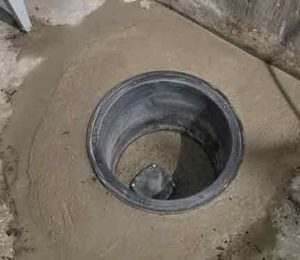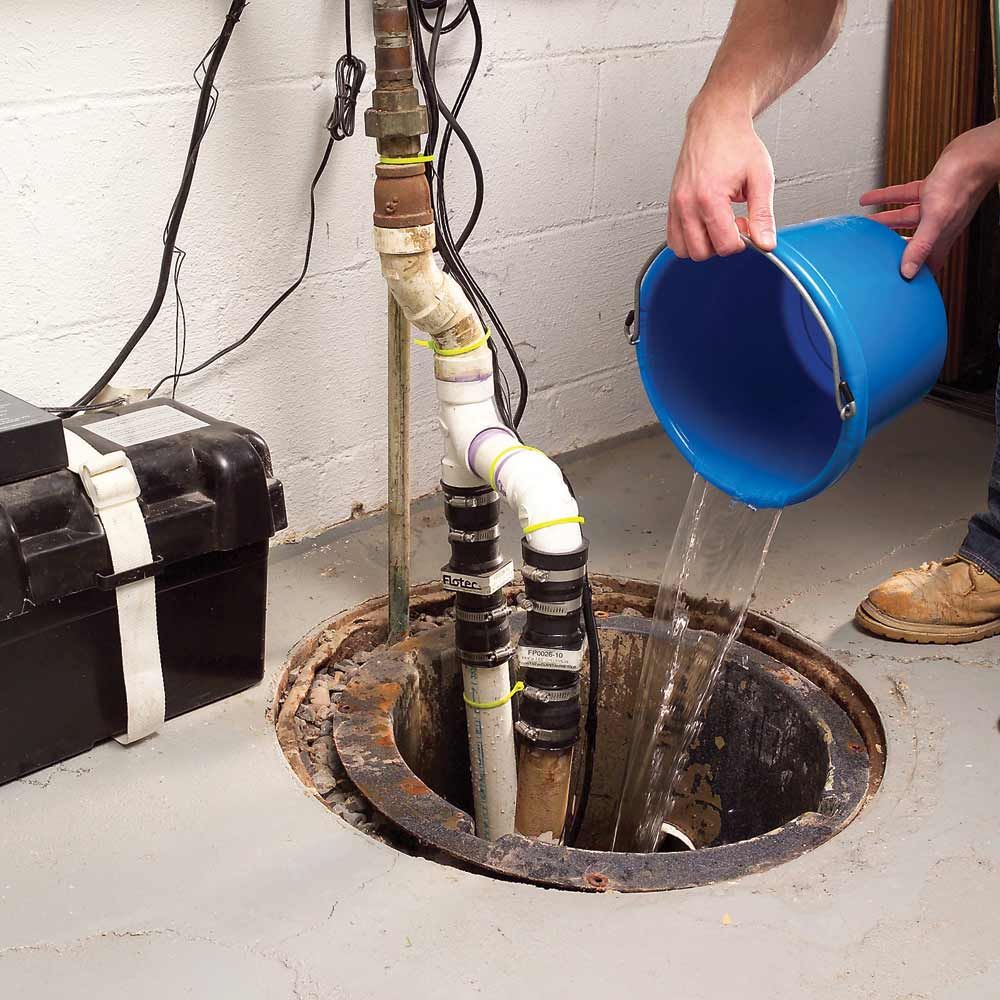Rapid Steps to Maintaining Your Sump Pump
Rapid Steps to Maintaining Your Sump Pump
Blog Article
This post on the next paragraphs in relation to Steps to Cleaning Your Sump Pump Properly is amazingly attention-grabbing. You should check it out.

Sump pumps are critical components in several homes, especially in areas susceptible to flooding or extreme wetness. They aid prevent water damages by efficiently getting rid of excess water from basements or crawl spaces. Nonetheless, like any other device, sump pumps need regular maintenance to guarantee they operate properly when needed one of the most. Cleansing your sump pump is an important part of its upkeep, and recognizing how to do it properly can save you from pricey repairs and potential disasters.
Introduction
Preserving a tidy sump pump is vital for its appropriate performance and longevity. Overlooking this crucial task can lead to blockages, malfunctions, and inevitably, water damage to your residential or commercial property. For that reason, discovering how to clean up a sump pump is critical for home owners that rely upon these devices to keep their basements completely dry and protected.
Indicators of a Dirty Sump Pump
Understanding when your sump pump needs cleaning is critical for avoiding potential malfunctions. Some typical indicators that show a dirty sump pump consist of strange noises throughout procedure, lowered water flow, and visible debris in the pit. If you discover any one of these signs and symptoms, it's necessary to cleanse your sump pump immediately to prevent any further problems.
Planning for Cleansing
Prior to you start cleansing your sump pump, it's vital to take some safety and security precautions. Begin by shutting off the power to the pump to avoid any type of electrical accidents. Furthermore, put on ideal safety gear, such as gloves and safety glasses, to safeguard yourself from dust, particles, and prospective pathogens.
Comprehending the Sump Pump
Prior to diving into the cleansing procedure, it's important to have a basic understanding of how a sump pump works. Generally mounted in a pit or container listed below the cellar flooring, a sump pump consists of numerous essential components, consisting of a pump, a float button, and a discharge pipe. When water collects in the pit, the float switch turns on the pump, which then pumps the water out with the discharge pipe, away from the building's foundation.
Step-by-step Overview to Cleansing a Sump Pump
Shutting Off the Power
Begin by detaching the power supply to the sump pump to avoid any kind of crashes while cleansing.
Looking For Correct Performance
Prior to reinstalling the pump, do a quick test to guarantee that the float switch activates the pump properly. Pour some water right into the sump pit and observe the pump's operation. If whatever is working correctly, you can reconstruct the pump and reconnect the power supply.
Eliminating Debris and Dirt
Utilize a container or an inside story to eliminate any kind of noticeable particles, dust, or debris from the sump pit. Dispose of the particles effectively to prevent it from obstructing the pump or the discharge pipeline.
Cleaning the Pump and Drift Switch
Once the pit is clear of particles, carefully remove the pump from the pit. Check the pump and the float button for any kind of indications of damages or wear. Use a soft brush or fabric to clean up the surface areas and remove any kind of built up grime.
Purging the System
After cleaning up the pump and float button, purge the sump pit with tidy water to get rid of any type of remaining dirt or debris. This will assist guarantee that the pump runs efficiently and successfully.
Maintenance Tips to Keep Your Sump Pump Clean
In addition to routine cleansing, there are a number of maintenance suggestions you can comply with to maintain your sump pump in optimum condition:
Final thought
Cleansing your sump pump is a critical facet of its upkeep and makes certain that it operates properly when you require it the most. By following the actions described in this overview and including normal upkeep into your regimen, you can extend the life-span of your sump pump and protect your home from water damage.
6 STEPS ON HOW TO CLEAN A SUMP PUMP PROPERLY
UNDERSTANDING SUMP PUMPS
Your sump pump plays a crucial role in protecting your home by managing and removing excess water. It primarily functions as a “shield”, guarding your basement against the damaging effects of water accumulation. The pump is housed in a sump pit in the lowest part of your basement, and its job is to pump out any water that collects there.
During heavy rainfalls or when snow melts rapidly, water can infiltrate your basement, posing potential risks like flooding, structural damage, and harmful mold growth. Here, the sump pump springs into action, pumping out the intruding water and directing it away from your home.
SAFETY FIRST
Before cleaning, remember to prioritize safety. Disconnect the sump pump from the power source to prevent any accidental electric shocks. Also, wear sturdy gloves to protect your hands from any sharp or dirty components within the pump.
REMOVE THE SUMP PUMP
After ensuring your safety, the next step is to remove the sump pump from its pit. Doing this might require careful maneuvering as you don’t want to damage any pump components. Once removed, clean the sump pit to remove any accumulated debris or sludge.
INSPECT THE PUMP
Inspect the pump for any visible signs of wear or damage. Check the power cord, float switch, and impeller housing. If any components look worn out or damaged, consider replacing them to ensure optimal performance.
CLEAN THE PUMP
Thoroughly clean the pump with warm, soapy water. Make sure to rid it of any dirt, gravel, or other debris that might impede its performance. You can use a toothbrush to clean the small, hard-to-reach parts of the pump.
REINSTALL THE SUMP PUMP
Reinstall the pump into the sump pit Make sure it’s positioned correctly to remove the water effectively Once it’s back in place, reconnect it to the power source TEST THE PUMP
Finally, pour some water into the pit to ensure the pump works correctly. It should start automatically and begin pumping out the water; if it doesn’t, check the power source and the positioning of the pump.
Remember, while cleaning your sump pump is an essential part of home maintenance, hiring a professional plumber for a thorough inspection and cleaning at least once a year is also important. This will ensure that your pump is in optimal condition, ready to protect your home from potential water damage.
BEST PRACTICES FOR CLEANING SUMP PUMP DISCHARGE PIPES
Regular Inspection: Regularly inspect your discharge pipes, especially during heavy rainfall or snowmelt periods. Look for any signs of blockage or damage. Early detection of problems can prevent serious issues down the line. Periodic Cleaning: Over time, sediment and debris can accumulate in the discharge pipes, impeding the flow of water. Regular cleaning helps keep the pipes clear and functioning efficiently. You can use a high-pressure water jet to effectively clean the pipes. Insulation During Winter: In colder climates, discharge pipes can freeze, blocking the outflow of water. Protect your discharge pipes from freezing temperatures by insulating them with foam pipe insulation. This will ensure the sump pump can continue to discharge water even in freezing conditions. Proper Positioning: The discharge pipe should be positioned to direct water away from your home’s foundation. Improper positioning can lead to water seeping back into the basement. Ensure the pipe is long enough and angled correctly. Installation of a Check Valve: A check valve prevents water from flowing back into your sump pit after the pump has pushed it out. Installing a check valve helps maintain the efficiency of your sump pump and reduces the risk of flooding. Minimize Pipe Turns: Every curve or turn in the discharge pipe can decrease the efficiency of water flow. By minimizing turns and bends in your discharge pipe, you can increase the efficiency of your sump pump. https://www.fullspeedplumbing.com/how-to-clean-a-sump-pump-properly9999/

I came across that post on Steps to Cleaning Your Sump Pump Properly while doing a lookup on the internet. Loved our post? Please share it. Help somebody else discover it. Many thanks for your time invested reading it.
Click On This Link Report this page